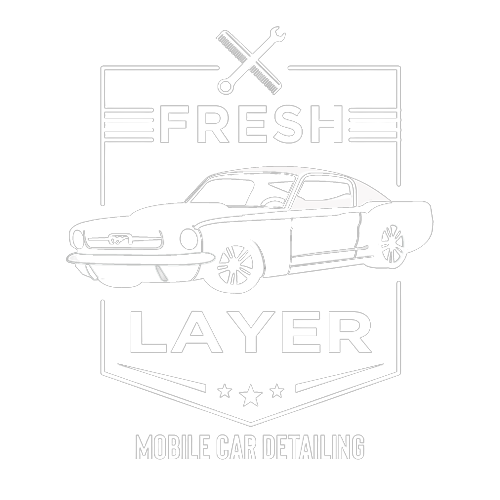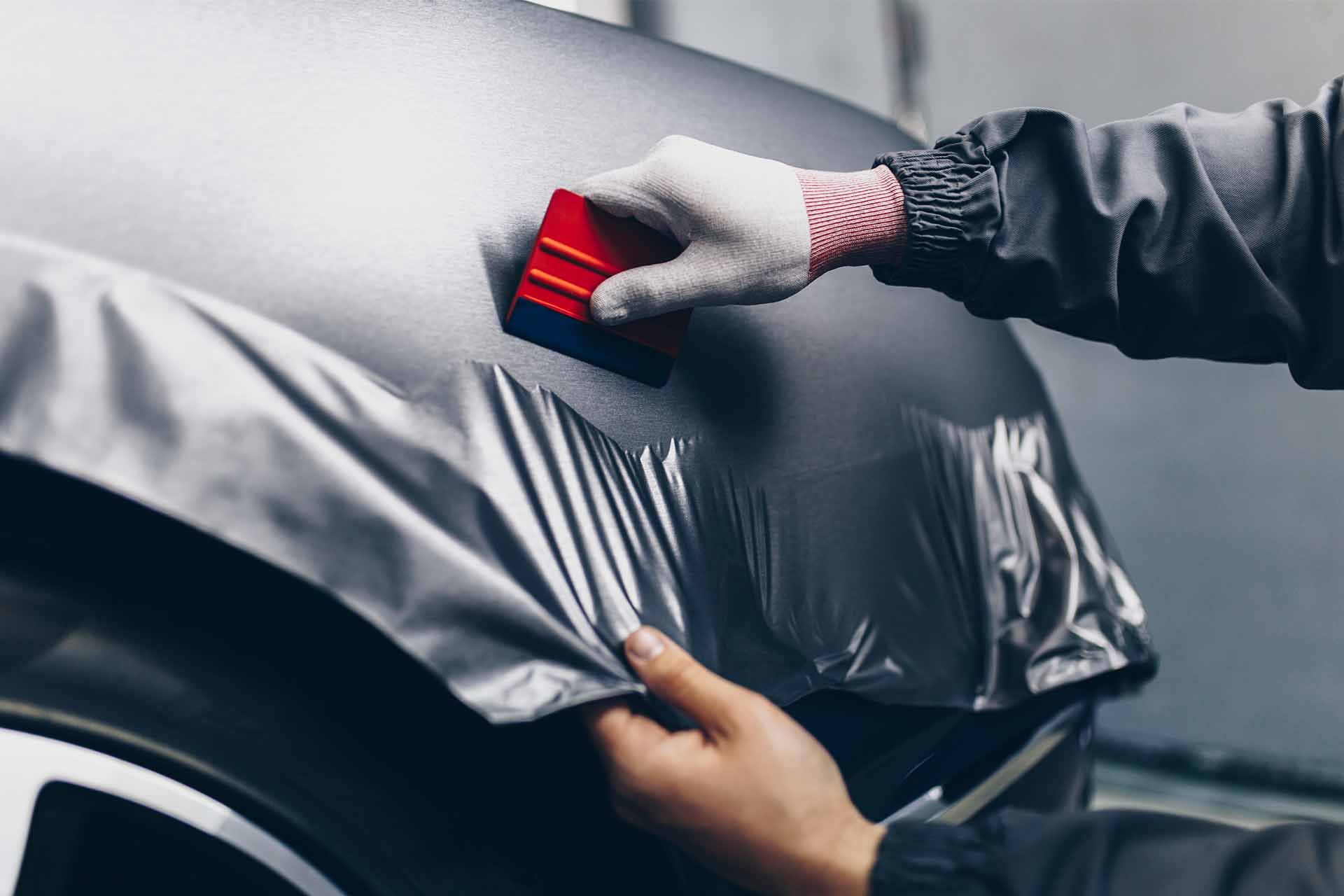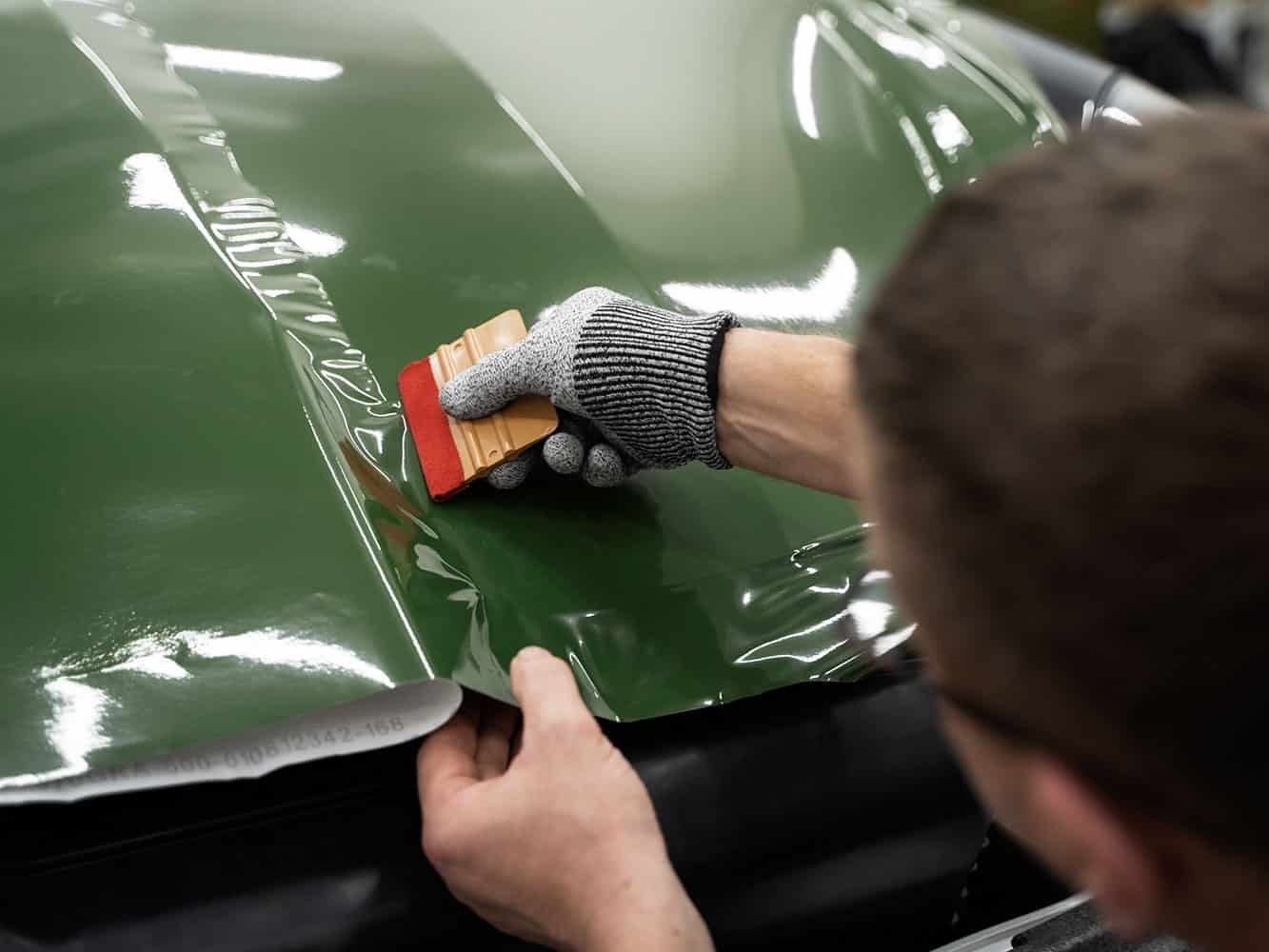How Long Does Vinyl Wrap Last?
Vinyl wrapping has emerged as a favored alternative to traditional painting for vehicle customization, offering versatility and a unique aesthetic without the permanence of paint.
This method involves applying a thin, adhesive film over the car's body, which not only transforms its appearance but also provides a protective layer against environmental elements and minor abrasions.
But one common question among car enthusiasts and business owners is, how long does vinyl wrap last?
One of the most appealing aspects of vinyl wraps is their reversibility; owners can remove or replace the wrap without affecting the original paint underneath.
Additionally, the variety of finishes available — including matte, gloss, satin, and metallic — allows for personalization tailored to individual tastes and styles.
This article aims to delve into the various factors that influence the longevity of vinyl wraps.
Understanding these elements can help car owners make informed decisions about vinyl wrapping, ensuring they maximize both the aesthetic appeal and the practical benefits of their investment.
What is Vinyl Wrap?
Vinyl wrap is a thin, adhesive-backed film applied to a vehicle’s surface for aesthetic or protective purposes.
It’s available in various finishes, including matte, gloss, satin, and textured options like carbon fiber.
Key Benefits:
Customizable and affordable compared to paint jobs.
Provides a layer of protection against minor scratches and UV rays.
Easy to remove and replace when needed.
Definition of Vinyl Wrap and Materials Used in Its Production
Vinyl wrap is a thin, flexible material made from polyvinyl chloride (PVC) that is used to cover and alter the appearance of a vehicle's exterior.
It comes with an adhesive backing that allows it to be applied directly over the original paint of a car.
The primary components of vinyl wrap include PVC, plasticizers to ensure flexibility, and various additives that provide resistance to UV rays and environmental degradation.
The vinyl is then printed with designs or colors and covered with a laminate layer to protect against scratches and fading.
Brief History of Vinyl Wrap in the Automotive Industry
The use of vinyl wraps in the automotive industry began in the 1950s for advertising purposes, initially seen on buses and taxis.
By the 1980s and 1990s, technology had advanced to allow more detailed graphics and durable materials suitable for a variety of vehicles.
This period marked the expansion of vinyl wraps from commercial advertising to personal customization of private vehicles. In recent years, vinyl wrapping has gained significant popularity among car enthusiasts and owners looking to customize their vehicles without permanent changes to the paintwork.
Overview of the Different Types of Vinyl Wraps
Vinyl wraps come in a wide range of finishes and textures, each offering a unique look and set of characteristics:
Matte Wraps: Provide a flat, non-glossy finish that delivers a modern and stylish look. Matte wraps are popular for those seeking a subdued and elegant appearance.
Gloss Wraps: Mimic the look of traditional paint but can offer more vibrant colors and a shiny finish. Gloss wraps are ideal for owners who want their cars to stand out with a sleek, high-shine effect.
Satin Wraps: Have a semi-gloss finish that is less shiny than gloss but more reflective than matte. Satin wraps give vehicles a sophisticated, understated sheen.
Metallic Wraps: Contain metallic flakes that catch light, adding a sparkling, shimmering effect. These wraps are favored for their dynamic and eye-catching appearance.
Carbon Fiber Wraps: Feature a textured finish that looks like real carbon fiber, providing a sporty and high-tech look. These are particularly popular for accentuating certain parts of a vehicle, such as hoods, mirrors, or spoilers.
Each type of vinyl wrap offers different benefits and aesthetic appeals, allowing vehicle owners to choose the perfect wrap to match their style and needs.
Factors That Affect Vinyl Wrap Longevity
1. Material Quality
Premium cast vinyl, such as 3M or Avery Dennison, lasts longer and resists fading better than budget alternatives.
2. Installation Technique
Poor installation can lead to bubbles, lifting, and peeling. Always rely on certified professionals for flawless application.
3. Environmental Conditions
UV Exposure: Prolonged sun exposure can cause fading and cracking.
Temperature Extremes: Rapid temperature changes may weaken adhesion.
Pollutants: Acid rain, bird droppings, and road salt can degrade the material.
4. Maintenance Practices
Regular cleaning and avoiding harsh chemicals can keep your wrap in top condition. We’ll discuss maintenance tips in detail below.
Environmental Exposure
The environment to which a vinyl-wrapped vehicle is exposed can also impact the longevity of the wrap.
Weather Conditions:
Exposure to extreme sunlight, high temperatures, humidity, and other harsh weather conditions can degrade the vinyl over time.
UV radiation can cause fading and brittleness, while temperature extremes can lead to shrinking or expansion, damaging the wrap.
Urban vs. Rural Environments:
Vehicles in urban environments may face additional challenges such as pollution and industrial chemicals, which can accelerate the degradation of the vinyl.
Conversely, cars in rural areas might contend with more dirt and dust, which can scratch and wear down the wrap if not regularly cleaned.
By understanding these key factors — material quality, installation method, and environmental exposure — vehicle owners can better gauge how long their vinyl wraps might last and take proactive steps to extend their durability.
This insight helps in maintaining both the vehicle's aesthetic appeal and the protective benefits of the wrap.
Average Lifespan of Vinyl Wraps
General Lifespan Expectations for Car Vinyl Wraps
The lifespan of a vinyl wrap can vary significantly based on several factors, but on average, a well-applied and properly maintained vinyl wrap can last between 5 to 7 years.
The quality of the vinyl, the precision of the installation, and the environmental conditions to which the vehicle is exposed play pivotal roles in determining the longevity of the wrap.
How Different Types of Wraps May Have Varying Lifespans
Different finishes of vinyl wraps not only offer unique aesthetics but also possess distinct durability characteristics:
Matte Wraps: While offering a modern and stylish look, matte wraps may be slightly more susceptible to showing dirt and imperfections, which could potentially lead to more frequent cleaning and maintenance needs.
However, they generally hold up well against fading.
Gloss Wraps: Gloss wraps mimic the shine of traditional paint and are generally durable against environmental elements, but they might show swirls and scratches more easily than matte finishes.
Satin Wraps: These wraps provide a middle ground between matte and gloss, offering better resistance to scratches than gloss wraps while still maintaining some of the sheen that can hide minor imperfections better than matte wraps.
Metallic and Specialty Wraps: These types of wraps, including carbon fiber textures, often contain additional protective layers to enhance their resilience against UV rays and physical abrasions, potentially extending their lifespan.
Case Studies or Testimonials from Users Regarding Their Experiences with Vinyl Wrap Durability
Case studies and testimonials provide insightful real-world evidence about the durability of vinyl wraps:
Case Study: Glossy Wrap on a Sports Car
Vehicle: 2015 Porsche 911
Wrap Type: High-gloss metallic blue
Duration: Wrapped for 6 years
Outcome: The wrap maintained its vivid color and shine for the entire period, with minimal fading and only slight wear on the edges, which were regularly exposed to the elements.
Testimonial: Matte Wrap on an SUV
Vehicle: 2018 Ford Explorer
Wrap Type: Matte black
Duration: 4 years
Owner’s Feedback: The owner noted that while the wrap effectively resisted fading, it required careful maintenance to keep the surface looking clean, as it showed dust and dirt more readily than other finishes.
These examples highlight how various types of vinyl wraps can perform over time, underlining the importance of considering both aesthetic preferences and practical durability when choosing a wrap.
The real-world experiences of other users can also offer valuable insights into what one might expect from different types of vinyl wraps.
Vinyl Wrap Lifespan Guide
| Type of Vinyl Wrap | Average Lifespan |
|---|---|
| Premium Cast Vinyl | 7 years or more |
| Calendar Vinyl (economy) | 3-5 years |
| Specialty Finishes (e.g., chrome) | 1-3 years |
Maintenance Tips to Expend Wrap Life
How to Extend the Life of Your Vinyl Wrap
1. Wash Your Vehicle Regularly
Use a pH-neutral car shampoo.
Avoid abrasive brushes; opt for microfiber cloths.
Rinse thoroughly to remove dirt and contaminants.
2. Avoid Prolonged Sun Exposure
Park in shaded areas or use a car cover.
Consider UV-protective coatings for additional protection.
3. Apply Protective Coatings
Ceramic coatings designed for vinyl wraps can enhance durability by adding a hydrophobic layer.
4. Avoid High-Pressure Washers
High-pressure water can lift edges and compromise adhesion. Use a low-pressure setting if necessary.
Proper maintenance is crucial for extending the life of a vinyl wrap. With the right care, a wrap can retain its appearance and protective qualities for many years. Here are some essential tips for maintaining your vinyl-wrapped vehicle:
Routine Care and Maintenance Practices
Regular Cleaning: Frequent cleaning is key to maintaining the quality of your vinyl wrap. Wash your vinyl wrap every two weeks or more often if it's exposed to a lot of dirt or pollutants. Use gentle washing techniques to avoid scratching or lifting the edges of the wrap.
Avoid Automatic Car Washes: It's best to avoid automatic car washes, as the harsh brushes and strong chemicals can damage the wrap. Instead, opt for hand washing.
Quick Removal of Stains: Immediately remove potentially staining substances such as bird droppings, tree sap, and road tar. These materials can cause discoloration and damage if left on the wrap for too long.
Recommended Cleaning Products and Techniques
Use Vinyl-Specific Cleaners: Employ cleaners specifically designed for vinyl wraps to ensure they do not degrade the adhesive or vinyl. Avoid using wax-based cleaning products on matte or satin wraps as they can create an unwanted shine or gloss.
Soft Cleaning Tools: Use a soft, clean sponge or microfiber cloth for washing. These materials are gentle on the vinyl and effective at removing dirt without scratching.
Rinse Thoroughly: Always thoroughly rinse your vehicle with clean water after washing to remove any residual soap or cleaners, which can leave marks or degrade the vinyl over time.
Importance of Storing Vehicles Properly to Protect the Wrap
Indoor Storage: Whenever possible, store your vehicle in a garage or covered area. This protects the wrap from excessive exposure to UV rays and environmental contaminants, which can accelerate wear and fading.
Use a Car Cover: If indoor storage isn't an option, consider using a breathable car cover. This can provide protection from the sun, moisture, and dirt, helping to extend the life of the wrap.
Avoid Long-Term Sun Exposure: When parking outdoors for extended periods, try to find shaded or partially shaded spots. Prolonged exposure to direct sunlight can lead to fading and deterioration of the wrap.
Following these maintenance tips can significantly enhance the longevity and appearance of your vinyl wrap, ensuring that your vehicle continues to look its best while also preserving the underlying paint.
Signs of Wear and When to Replace a Wrap
Signs It’s Time to Replace Your Vinyl Wrap
Fading and Discoloration: Colors look dull or uneven.
Cracking or Peeling: Edges start lifting or cracking.
Persistent Stains: Marks that cleaning can’t remove.
Loss of Adhesion: Wrap detaches from the vehicle’s surface.
If you notice these signs, it’s time to consult a professional about replacement options.
Identification of Common Signs That a Vinyl Wrap Needs Replacement
Fading: Over time, especially if frequently exposed to sunlight, the vibrant colors of your wrap can become dull and faded. This is one of the most obvious signs that the wrap is aging and may need replacement.
Peeling: Edges of the wrap may start to lift or peel away from the vehicle’s body. This can occur due to improper installation or environmental factors like extreme cold or heat.
Bubbling: Air bubbles beneath the wrap can appear if the wrap wasn’t properly applied or if gases trapped under the vinyl start to expand due to heat. Small bubbles are often repairable, but large areas of bubbling might require a complete replacement.
Cracking and Brittle Texture: As vinyl wraps age, they can become brittle and crack, particularly in colder climates. Once the wrap starts cracking, it’s no longer effective at protecting the vehicle’s paint and should be replaced.
Steps to Take When a Wrap Begins to Show Wear
Assess the Extent of Damage: Determine whether the wear is localized or extensive. Localized issues might be repairable, while widespread wear typically requires a full wrap replacement.
Consult a Professional: If you're unsure about the condition of your wrap, consult with a professional installer. They can provide advice on whether a repair is feasible or if replacement is the best option.
Plan for Replacement: If a replacement is necessary, start planning by choosing the new wrap color and finish, and scheduling an appointment with a trusted installer.
How to Safely Remove an Old Wrap and Prepare for a New One
Heat the Wrap: Use a heat gun or a hairdryer to gently heat the vinyl. This softens the adhesive, making the material easier to peel off. Heat small sections at a time to ensure even removal.
Peel the Vinyl: Start peeling the vinyl slowly from one corner. Pull steadily and at a 45-degree angle. If the vinyl breaks, reheat the next section and continue.
Remove Adhesive Residue: After removing the vinyl, adhesive residue may remain. Use an adhesive remover suitable for vehicles to clean the surface. It’s important to ensure all residue is removed to provide a smooth base for the new wrap.
Clean and Inspect the Paint: Thoroughly wash the vehicle’s surface and inspect for any damage that might need to be addressed before applying a new wrap. Any chips, rust, or rough surfaces should be smoothed and sealed.
Schedule Installation: Once the vehicle is prepped, take it to a professional installer for the new wrap. Professional installation ensures that the wrap is applied smoothly and lasts longer without issues.
By recognizing the signs of wear and knowing how to address them, you can maintain your vehicle’s aesthetic appeal and protect its value with timely wrap replacements.
FAQs About Vinyl Wrap Longevity
Q: Can vinyl wrap last longer than 7 years?
A: Yes, with premium materials and proper maintenance, some wraps exceed their average lifespan.
Q: Does vinyl wrap damage car paint?
A: No, when applied correctly, it protects the paint. Improper removal, however, can cause damage.
Q: Can I wrap a car with existing damage?
A: Minor scratches are fine, but significant dents or rust should be repaired first for optimal results.
Q: Can vinyl wrap last longer than 7 years?
A: Yes, with premium materials and proper maintenance, some wraps exceed their average lifespan.
Q: Does vinyl wrap damage car paint?
A: No, when applied correctly, it protects the paint. Improper removal, however, can cause damage.
Q: Can I wrap a car with existing damage?
A: Minor scratches are fine, but significant dents or rust should be repaired first for optimal results.
Conclusion
Vinyl wraps offer an exciting way to customize and protect your vehicle, providing both aesthetic flair and a safeguard against environmental elements.
Throughout this article, we've explored several key factors that influence the durability of vinyl wraps, including the quality of the material, the expertise of the installation, and the environmental conditions to which the wrap is exposed.
A well-chosen and properly maintained vinyl wrap can last between 5 to 7 years, making it a cost-effective alternative to traditional paint jobs.
The variety of finishes available—matte, gloss, satin, and specialty textures—allows car owners to personalize their vehicle's look to match their style while also considering practical aspects like maintenance and longevity.
When deciding on a vinyl wrap, it's important to balance aesthetics with protection and cost.
High-quality materials and professional installation might come at a higher initial price but can offer better durability and a more polished look in the long run.
Regular maintenance, such as cleaning and protecting the wrap from excessive sun exposure, plays a crucial role in maximizing the lifespan of the wrap.
Call to Action
We encourage you to share your experiences with vinyl wraps in the comments below.
Whether you've faced challenges or found particular products and practices that have extended the life of your wrap, your insights can help others make informed decisions.
If you found this information helpful and wish to learn more about vehicle customization and care, consider subscribing to our blog or newsletter.
Stay updated with the latest tips, trends, and techniques to keep your vehicle looking its best.









